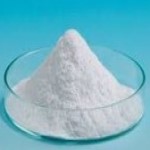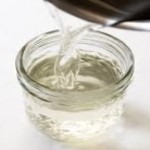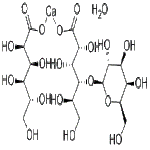CAS Number 12569-38-9, Calcium Glubionate or Calcium Glucono Lactobionate Syrup or Powder USP Grade Manufacturers Exporters








CAS Number 12569-38-9, Calcium Glubionate or Calcium Glucono Lactobionate Syrup or Powder Manufacturer Exporter
For Properties Specifications of Calcium Glubionate or Calcium Glucono Lactobionate Click Properties, Specifications of Calcium Glubionate or Calcium Glucono Lactobionate Manufacturer.
For Uses of Calcium Glubionate or Calcium Glucono Lactobionate Click Uses of Calcium Glubionate or Calcium Glucono Lactobionate Manufacturer.
For For SDS MSDS Sheet of Calcium Glubionate or Calcium Glucono Lactobionate Click SDS Safety Data Sheet MSDS Sheet of Calcium Glubionate or Calcium Glucono Lactobionate Manufacturer.
The Properties and Specifications of Calcium Glubionate or Calcium Glucono Lactobionate:
Specifications of Calcium Glubionate or Calcium Glucono Lactobionate or Glubionate calcium
Description: White to yellow-tinged crystalline granules or powder.
Clarity & Color of Solution: 10 % W/V solution is clear and colorless.
Solubility: Freely soluble in water, very slightly soluble in alcohol.
Loss on drying: Not more than 5%
pH of 10% solution @ 25C: 5.4 to 8
Sulfate: Not more than 400 ppm.
Chlorides: Not more than 500 ppm.
Heavy Metals: Not more than 20 ppm.
Arsenic: Not more than 2 ppm.
Iron: Not more than 40 ppm.
Calcium Content: 6.0 % to 7.0 %.
Calcium Glubionate Syrup USP Grade:
Calcium Glubionate Syrup is a solution containing equimolar amounts of Calcium Gluconate and Calcium Lactobionate or with Calcium Lactobionate predominating. It contains not less than 95.0 percent and not more than 105.0 percent of the labeled amount of calcium (Ca).
A: A dilution of the Syrup with water (1 in 10) responds to the tests for Calcium.
B: Dilute a portion of the Syrup with water to obtain a test solution containing about 0.4 mg of calcium per mL. Prepare a Standard solution in water containing 2 mg of calcium gluconate and 4 mg of calcium lactobionate per mL. Apply separately 5 0L of the test solution and 5 0L of the Standard solution to a suitable thin-layer chromatographic plate coated with 0.25-mm layer of chromatographic silica gel. Dry the plate in a current of cool air. Place the plate in a suitable chromatographic chamber lined with filter paper and previously equilibrated with a solvent system consisting of a mixture of alcohol, water, ethyl acetate, and ammonium hydroxide (50:30:10:10). Develop the chromatogram until the solvent front has moved about three-fourths of the length of the plate. Remove the plate from the chamber, and dry at 100 for 20 minutes. Allow to cool, and spray with a spray reagent prepared as follows: Dissolve 2.5 g of ammonium molybdate in about 50 mL of 2 N sulfuric acid in a 100-mL volumetric flask, add 1.0 g of ceric sulfate, swirl to dissolve, dilute with 2 N sulfuric acid to volume, and mix. Heat the plate at 110 for about 10 minutes: the two principal spots obtained from the test solution correspond in color, size, and RF value to those obtained from the Standard solution. [NOTE—Sucrose, if present in the test solution, appears in the chromatogram as a spot between two principal spots.]
pH: between 3.4 and 4.5.
The Uses of Calcium Glubionate or Calcium Glucono Lactobionate:
Calcium Glubionate may be used to treat conditions caused by low calcium levels such as bone loss (osteoporosis), weak bones, etc. Calcium glubionate is used to prevent and to treat calcium deficiencies. Calcium gluconate is a mineral supplement and medication.
The MSDS-SDS Hazard Statement of Calcium Glubionate or Calcium Glucono Lactobionate:
Section 1: Chemical Product and Company Identification
Product Name & Other Names: Calcium Glubionate or Calcium Glucono Lactobionate.
CAS Number: 12569-38-9
Chemical Formula: (C12 H21 O12. C6 H11 O7) Ca-2H2O
Molecular Weight: 592.51 (anhydrous)
Relevant uses and uses advised against (if any): Industrial Manufacturing.
Suppliers: As per letterhead.
Section 2: Hazards Identification
GHS, Globally Harmonized System Classification in accordance with 29 CFR 1910
Classification according to Regulation (EC) No 1272/2008
Not a hazardous substance or mixture according to Regulation (EC) No. 1272/2008.
This substance is not classified as dangerous according to Directive 67/548/EEC.
Labeling according to GHS & Regulation (EC) No 1272/2008
GHS Label Elements NONE |
Signal Word: None
Precautionary statements:
P261: Avoid breathing dust/fume/gas/mist/vapors/spray.
P262: Do not get in eyes, on skin, or on clothing.
P281: Use personal protective equipment as required.
P302+P352: IF ON SKIN: Wash with plenty of soap and water.
P304+P340: IF INHALED: Remove victim to fresh air and keep at rest in a position comfortable for breathing.
P305+P351+P338: IF IN EYES: Rinse cautiously with water for several minutes. Remove contact lenses, if present and easy to do. Continue rinsing.
P337+313: If eye irritation persists get medical advice/attention.
Section 3: Composition and Information on Ingredients
Product Name & Other Names: Calcium Glubionate or Calcium Glucono Lactobionate.
CAS Number: 12569-38-9
Water may have been added to make a syrup.
Section 4: First Aid Measures
Always seek medical advice after the first aid treatment.
Skin: Rinse with water. Soap may be used. Seek Medical Aid.
Eyes: Wash eyes with plenty of water for at least 15 minutes, lifting lids occasionally. Seek Medical Aid.
Inhalation: Remove to fresh air. If not breathing, give artificial respiration. If breathing is difficult, give oxygen.
Ingestion: If swallowed, induce vomiting immediately after giving two glasses of water. Never give anything by mouth to an unconscious person.
Notes to Physician: Treat symptomatically.
Section 5: Fire and Explosion Data
Flammability of the Product: Non-flammable.
Products of Combustion: Calcium oxide, Fumes and Oxides of carbon.
Fire Fighting Media and Instructions: Use water spray, alcohol-resistant foam, dry chemical or carbon dioxide. Do not use a direct stream of water to extinguish.
Extinguishing Media Not recommended: Avoid using solid water jet as it may scatter the fire.
Special Information: In the event of a fire, wear full protective clothing and NIOSH-approved self-contained breathing apparatus with full face piece operated in the pressure demand or other positive pressure mode. At high temperatures under fire conditions, it may produce toxic or irritating fumes. Fire-extinguishing work is done from the windward and the suitable fire-extinguishing method according to the surrounding situation is used.
Section 6: Accidental Release Measures
Personal precautions, protective equipment, and emergency procedures: Avoid breathing dust/fumes/gas/mist/vapors/spray. Use individual protective equipment (waterproof boots, suitable protective clothing, safety glasses, etc.). Restrict unprotected personnel from the area. Prevent any contact with hot surfaces. Do not approach facing the wind. Do not touch the spilled material.
Environmental precautions: Do not let the product enter drains, soil, or water sources.
Methods and materials used for containment Cleanup procedures and Storage: Do not inhale dust, vapors, mist, or gas. Avoid dust formation. Contain spilled material. Cover with an inert, non-combustible absorbent material, (e.g. sand, earth, diatomaceous earth, vermiculite). Use a shovel to put the material into a convenient waste disposal container. Finish cleaning by spreading water on the contaminated surface and allow to evacuate as per law.
Section 7: Handling and Storage
Precautions for safe handling: Apply according to good manufacturing and industrial hygiene practices. Ensure proper ventilation. In case of insufficient ventilation, wear suitable respiratory equipment. Wash thoroughly after handling. Do not drink, eat, or smoke while handling. Avoid contact with skin, eyes, and clothing. Minimize dust generation. Avoid breathing dust/fumes/gas/mist/vapors/spray. Keep container tightly closed. Avoid ingestion and inhalation. Use individual protective equipment (waterproof boots, suitable protective clothing, safety glasses, etc.).
Conditions for safe storage, including any incompatibilities: Store in cool, dry, and ventilated area away from heat sources and protected from sunlight in tightly closed original container. Keep air contact to a minimum. Store protected from heat, sparks and ignition sources and incompatible materials. Avoid contact with skin and eyes. Avoid inhalation of dust/mist/vapor. Do not store with incompatible materials like strong oxidizing agents and acids.
Section 8: Exposure Controls/Personal Protection
Engineering Controls: Use process enclosures, local exhaust ventilation, or other engineering controls to keep airborne levels below recommended exposure limits.
Ventilation System: A system of local and/or general exhaust is recommended to keep employee exposures as low as possible.
Personal Respirators (NIOSH Approved): For conditions of use where exposure to dust or mist is apparent and engineering controls are not feasible, a particulate respirator may be worn.
Skin Protection: Wear protective gloves and clean body-covering clothing.
Eye Protection: Use chemical safety goggles and/or full face shield where dusting or splashing of solutions is possible. Maintain eye wash fountain and quick-drench facilities in work area.
Other Control Measures: Maintain good housekeeping in work area. Handle in accordance with good industrial hygiene and safety practice.
Section 9: Physical and Chemical Properties
Physical state and appearance: Solid white to off-white crystals or powder. Water may have been added to make a syrup.
Odor: Odorless.
Odor threshold: Not available.
pH (5% soln/water): 5 to 8.
Relative density: Not available.
Melting point/freezing point: Not available.
Initial boiling point and boiling range: Not available.
Flash point: Not available.
Auto-ignition temperature: Not available.
Decomposition temperature: Not available.
Upper/lower flammability or explosive limits: Not available.
Vapor pressure: Not available.
Vapor density: Not available.
Evaporation rate: Not available.
Flammability (solid, gas): Not available.
Partition coefficient: n-octanol/water: Not available.
Solubility: soluble in water.
Viscosity: Not available.
Section 10: Stability and Reactivity Data
Stability: It is stable.
Conditions of instability: Incompatible materials
Incompatibility with various substances: Oxidizing agents, acids. Heat.
Polymerization: Will not occur.
Section 11: Toxicological Information
Toxicity to Animals: Not available.
Carcinogenicity: No component of this product present at levels greater than or equal to 0.1% is identified as possible or confirmed human carcinogen by IARC, ACGIH, OSHA and NTP.
Mutagenic Effects: Not available.
Developmental Toxicity: Not available.
Reproductive Effects: No information available.
Section 12: Ecological Information
Ecotoxicity: The product is not considered harmful to aquatic organisms or to cause long-term adverse effects in the environment. Not dangerous for the ozone layer.
Toxicity to fish: No information available.
Persistence and Degradability: No information available.
Mobility: No information available.
Bioaccumulation/ Accumulation: No information available.
Results of PBT and vPvB assessment: No data available for assessment.
Section 13: Disposal Considerations
Waste Disposal: Waste must be disposed of in accordance with federal, state, and local environmental control regulations.
Section 14: Transport Information
DOT USA & ADR/RID Europe: Not controlled.
IMDG/IMO: Not controlled.
IATA/ICAO: Not controlled.
Section 15: Other Regulatory Information
USA Regulations:
California Proposition 65: This product does not contain any Proposition 65 chemicals.
Section 16 - Additional Information
DISCLAIMER: The information and recommendations set forth hereinare presented in good faith and believed correct as of the date hereof. It is compiled from various sources and it is not necessarily all inclusive nor fully adequate in every circumstance. In addition, these suggestions should not be confused with nor followed in violation of applicable laws, regulations, rules, or insurance requirements applicable. This MSDS sheet is intended only as a guide to the appropriate precautionary handling of the material by a professionally trained person using this product. Individuals receiving the information must exercise their independent judgment in determining its appropriateness for a particular purpose.Anmol Chemicals & Pharmaceuticals Pvt. Ltd. is an off-shoot of Anmol Chemicals Taloja. It is located in MIDC Taloja and it is manufacturing pharmaceutical grades of API, Excepients, Food grade and Reagent grade chemicals. Anmol Chemicals & Pharmaceuticals Pvt. Ltd. is a several decades old group of companies, engaged in manufacturing, supplying, distributing, wholesale supplies for actual users, retail or small pack supplies for research and development chemicals, fine and speciality chemicals, pharmaceutical excipients, mineral fortifiers in chemically pure, Analytical reagent grade, IP BP USP Ph Eur EP JP and other pharmaceutical grade monograph including FCC Food grade chemicals and Nutraceuticals, Mineral Fortifiers at best prices.

Calcium Glubionate or Calcium Glucono Lactobionate Structure
CAS Number 12569-38-9, Calcium Glubionate or Calcium Glucono Lactobionate Manufacturer Exporter
ANMOL CHEMICALS & PHARMACEUTICALS Pvt. Ltd.
India, USA, Europe, UAE
TELEPHONE: +912223770100
Navi Mumbai, INDIA
e-mail: info(At the rate i.e. @)anmol.org
Copyright. 16-nov-24
We manufacture:
Glacial Acetic Acid Manufacturer
Calcium Gluceptate or Calcium Glucoheptonate
Calcium Magnesium Lactate Gluconate

